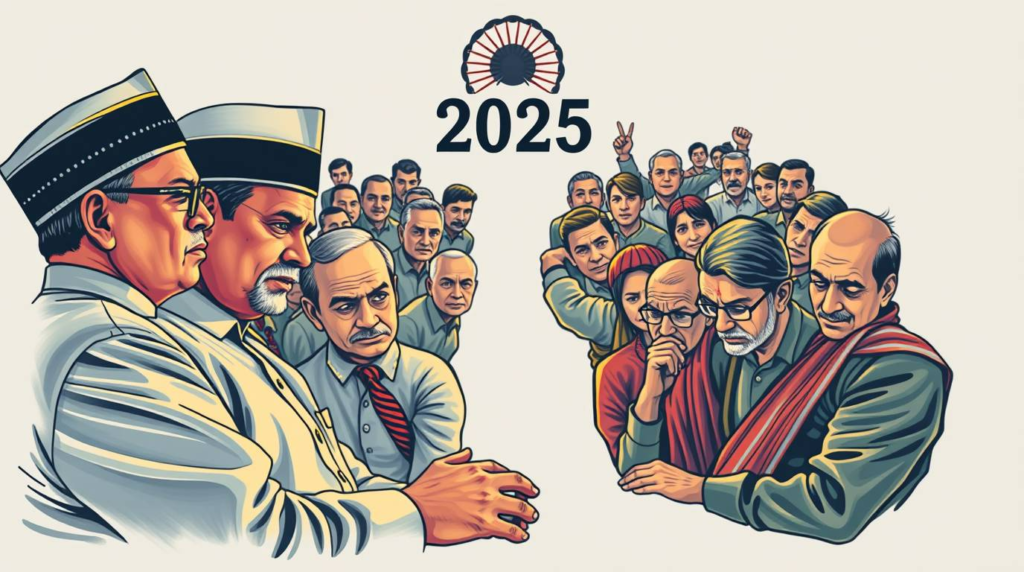The 2025-26 Union Budget has been hailed as a transformative step towards a Viksit Bharat (Developed India). However, beneath the grand promises and ambitious reforms lies a stark reality: the middle class, often considered the backbone of the Indian economy, has been left wanting. While the budget focuses on agriculture, MSMEs, and infrastructure, it fails to address the pressing concerns of the middle class. Let’s dive into why this budget is not good for the middle class and how it impacts their financial well-being.

1. Inadequate Tax Relief for the Middle Class
One of the most significant expectations from the budget was substantial tax relief for the middle class. However, the proposed changes fall short of providing meaningful benefits.
Key Changes in Tax Slabs
| Income Slab (₹) | Old Tax Rate (%) | New Tax Rate (%) |
|---|---|---|
| 0 – 4 lakh | 0 | 0 |
| 4 – 8 lakh | 5 | 5 |
| 8 – 12 lakh | 20 | 10 |
| 12 – 16 lakh | 30 | 15 |
| 16 – 20 lakh | 30 | 20 |
| 20 – 24 lakh | 30 | 25 |
| Above 24 lakh | 30 | 30 |
While the new tax regime reduces rates for some income brackets, the benefits are marginal. For instance, a taxpayer earning ₹12 lakh annually saves only ₹20,000, which is insufficient to counter rising inflation and living costs.
No Increase in Standard Deduction
The standard deduction for salaried individuals remains unchanged at ₹50,000. With inflation eroding purchasing power, the middle class needed a higher deduction to ease their financial burden.
2. Rising Cost of Living
The budget does little to address the skyrocketing cost of essential goods and services, which disproportionately affects the middle class.
Key Areas of Concern
- Fuel Prices: Despite global oil prices stabilizing, domestic fuel prices remain high due to taxes. The budget did not reduce excise duties on petrol and diesel.
- Healthcare Costs: While the budget proposes setting up Day Care Cancer Centres, it overlooks the rising costs of medicines and private healthcare, which most middle-class families rely on.
- Education Expenses: The budget focuses on expanding medical and technical education but does not provide relief for the increasing fees in private schools and colleges.
3. Limited Focus on Job Creation
The middle class heavily depends on stable employment opportunities. However, the budget’s measures to boost job creation are insufficient.
Key Issues
- MSME Support: While the budget enhances credit availability for MSMEs, it does not address the lack of job security and low wages in this sector.
- Skill Development: The proposed National Centres of Excellence for skilling are a step forward, but they lack a clear roadmap for immediate job creation.
- Private Sector Investment: The budget encourages private sector investment but does not mandate job creation as a condition for incentives.
4. Inflation and Its Impact on Savings
Inflation remains a silent killer for the middle class, eroding savings and reducing disposable income.
Impact on Savings
| Year | Inflation Rate (%) | Real Value of ₹1 Lakh Savings (₹) |
|---|---|---|
| 2023 | 6.5 | 93,500 |
| 2024 | 6.8 | 87,200 |
| 2025 | 7.0 | 81,100 |
The budget does not introduce measures to curb inflation or enhance returns on savings. With interest rates on fixed deposits and savings accounts remaining low, the middle class struggles to grow their wealth.
5. Housing and Real Estate Woes
The middle class dreams of owning a home, but the budget offers little to make this dream affordable.
Key Concerns
- High Property Prices: Despite the SWAMIH Fund 2 for affordable housing, property prices in urban areas remain out of reach for most middle-class families.
- Rising Home Loan Rates: The budget does not address the increasing EMIs due to rising interest rates on home loans.
- Lack of Tax Benefits: The budget does not increase the deduction limit on home loan interest under Section 24, which remains capped at ₹2 lakh.
6. Inadequate Social Security Measures
The middle class often bears the brunt of economic uncertainties, but the budget fails to strengthen social security nets.
Key Gaps
- Healthcare Coverage: While the budget extends healthcare under PM Jan Arogya Yojana to gig workers, it does not expand coverage for the middle class.
- Pension Reforms: The budget introduces a forum for pension product development but does not address the low returns on pension schemes.
- Insurance Costs: With no reduction in GST on insurance premiums, the middle class continues to face high costs for life and health insurance.
7. Missed Opportunities for Middle-Class Growth
The budget misses several opportunities to empower the middle class and boost their economic participation.
Key Missed Opportunities
- Digital Infrastructure: While the budget promotes digital connectivity, it does not address the high costs of internet and digital services.
- Entrepreneurship Support: The budget offers loans for first-time entrepreneurs but lacks comprehensive support for middle-class individuals looking to start businesses.
- Education Loans: The budget does not reduce interest rates on education loans, making higher education less accessible for middle-class families.
Conclusion: A Budget That Overlooks the Middle Class
The 2025-26 Union Budget, while ambitious in its vision for a Viksit Bharat, falls short in addressing the needs of the middle class. From inadequate tax relief to rising living costs and limited job creation, the budget leaves the middle class grappling with financial challenges.
As the backbone of the Indian economy, the middle class deserves more attention and support. Policymakers must recognize their struggles and introduce measures that truly empower them to thrive in a rapidly changing economy.
Disclaimer: The views expressed in this article are based on an analysis of the 2025-26 Union Budget and its potential impact on the middle class. Individual financial situations may vary, and readers are advised to consult financial experts for personalized advice.